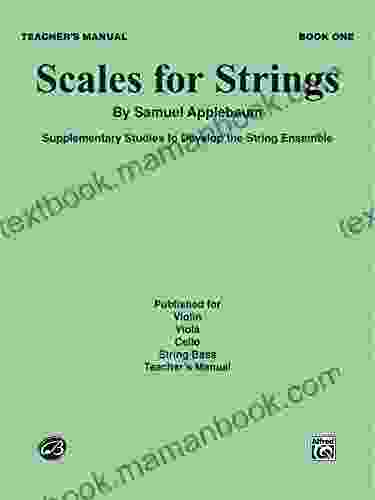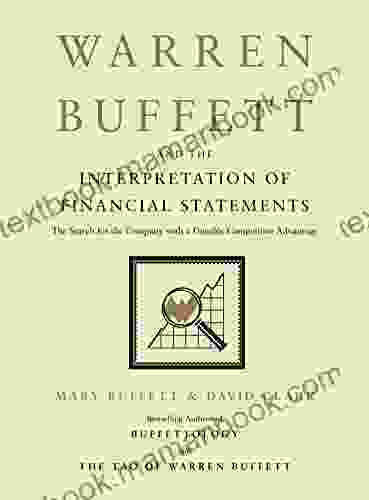Warren Buffett and the Art of Reading Financial Statements: A Guide to Decoding the Language of Business

Warren Buffett, the renowned "Oracle of Omaha," is arguably one of the most successful investors of all time. His investment philosophy, grounded in the principles of value investing, has consistently outperformed the broader market. Central to Buffett's approach is his ability to interpret financial statements, the language of business. By discerning the underlying financial health and prospects of a company, Buffett has made remarkable investment decisions.
This article delves into Warren Buffett's approach to reading financial statements, providing readers with a comprehensive guide to understanding this critical aspect of investing. We will explore the key ratios and metrics Buffett focuses on, the techniques he employs to assess a company's financial condition, and the insights he gleans from this analysis.
Buffett's financial statement analysis framework is built on the premise that a company's financial performance and financial health can be gleaned by examining its income statement, balance sheet, and cash flow statement. By scrutinizing these statements, Buffett seeks to gain a deep understanding of a company's earnings power, asset utilization, and cash flow dynamics.
4.6 out of 5
| Language | : | English |
| File size | : | 1512 KB |
| Text-to-Speech | : | Enabled |
| Screen Reader | : | Supported |
| Enhanced typesetting | : | Enabled |
| X-Ray | : | Enabled |
| Word Wise | : | Enabled |
| Print length | : | 206 pages |
The income statement provides insights into a company's revenue, expenses, and profits over a specific period. Buffett focuses on several key ratios derived from the income statement:
- Gross Profit Margin: This ratio measures the percentage of revenue left after deducting the cost of goods sold. Buffett seeks companies with high gross margins, indicating a strong competitive advantage and pricing power.
- Operating Profit Margin: This ratio represents the percentage of revenue left after deducting both the cost of goods sold and operating expenses. It gauges a company's operational efficiency and its ability to manage its costs.
- Net Profit Margin: This ratio represents the percentage of revenue left after deducting all expenses, including interest expenses and taxes. It measures a company's overall profitability.
The balance sheet provides a snapshot of a company's financial position at a specific point in time. Buffett pays close attention to a few key metrics:
- Current Ratio: This ratio measures a company's ability to meet its short-term obligations. It compares current assets (cash, inventory, receivables) to current liabilities. Buffett prefers companies with a current ratio of at least 2.0.
- Debt-to-Equity Ratio: This ratio compares a company's total debt to its shareholder equity. It gauges a company's financial leverage and its ability to withstand financial downturns. Buffett avoids companies with high debt-to-equity ratios.
- Return on Equity (ROE): This ratio measures the return a company generates for its shareholders relative to the amount of equity invested. It indicates how effectively a company is utilizing its capital. Buffett seeks companies with ROE consistently above the industry average.
The cash flow statement tracks the movement of cash through a company's operations, investing activities, and financing activities. Buffett focuses on two key metrics:
- Operating Cash Flow: This measures the cash generated by a company's core operations. It represents the cash a company can use to pay dividends, reinvest in its business, or reduce debt. Buffett favors companies with strong operating cash flow.
- Free Cash Flow: This is the cash left over after deducting capital expenditures from operating cash flow. It represents the cash a company can use for discretionary purposes such as acquisitions, share buybacks, or debt repayment. Buffett seeks companies with high free cash flow.
Beyond examining key ratios and metrics, Buffett employs specific techniques to assess a company's financial condition:
Buffett carefully reviews the notes to the financial statements, which provide additional details and explanations about a company's financial position and performance. He pays attention to the accounting policies used, the contingent liabilities, and any unusual or non-recurring items that may impact the company's financial results.
Buffett does not rely solely on a single year's financial statements. He analyzes long-term trends in a company's financial performance to identify consistent patterns and potential areas of concern. He compares a company's financial ratios and metrics over multiple years to assess its stability and financial resilience.
Buffett believes it is essential to understand the business model of a company before investing. He reads industry reports and annual reports to gain a deep understanding of the company's products, markets, and competitive landscape. This knowledge helps him assess the sustainability of a company's earnings power and its potential for long-term growth.
Buffett places a great deal of emphasis on the quality of a company's management team. He seeks companies led by capable and experienced managers who are committed to shareholder value creation and have a proven track record of successful execution. He often meets with management before investing to gauge their competence and integrity.
By meticulously analyzing financial statements, Buffett gleans valuable insights that inform his investment decisions:
Buffett seeks companies with consistent and predictable earnings power. He prefers companies with stable or growing margins, strong cash flow, and low debt. Such companies are less likely to encounter financial distress and are more likely to deliver long-term value to shareholders.
Buffett favors companies that efficiently utilize their assets to generate profits. He evaluates a company's inventory turnover, capital expenditure levels, and depreciation charges to assess how well it manages its assets. Companies with high asset utilization are more likely to produce strong returns for shareholders.
Buffett searches for companies with a sustainable competitive advantage. He looks for companies with strong brands, loyal customers, economies of scale, or proprietary technologies. Such companies can defend their market position and maintain high margins over the long term.
Financial statement analysis allows Buffett to assess the risks associated
4.6 out of 5
| Language | : | English |
| File size | : | 1512 KB |
| Text-to-Speech | : | Enabled |
| Screen Reader | : | Supported |
| Enhanced typesetting | : | Enabled |
| X-Ray | : | Enabled |
| Word Wise | : | Enabled |
| Print length | : | 206 pages |
Do you want to contribute by writing guest posts on this blog?
Please contact us and send us a resume of previous articles that you have written.
 Top Book
Top Book Novel
Novel Fiction
Fiction Nonfiction
Nonfiction Literature
Literature Paperback
Paperback Hardcover
Hardcover E-book
E-book Audiobook
Audiobook Bestseller
Bestseller Classic
Classic Mystery
Mystery Thriller
Thriller Romance
Romance Fantasy
Fantasy Science Fiction
Science Fiction Biography
Biography Memoir
Memoir Autobiography
Autobiography Poetry
Poetry Drama
Drama Historical Fiction
Historical Fiction Self-help
Self-help Young Adult
Young Adult Childrens Books
Childrens Books Graphic Novel
Graphic Novel Anthology
Anthology Series
Series Encyclopedia
Encyclopedia Reference
Reference Guidebook
Guidebook Textbook
Textbook Workbook
Workbook Journal
Journal Diary
Diary Manuscript
Manuscript Folio
Folio Pulp Fiction
Pulp Fiction Short Stories
Short Stories Fairy Tales
Fairy Tales Fables
Fables Mythology
Mythology Philosophy
Philosophy Religion
Religion Spirituality
Spirituality Essays
Essays Critique
Critique Commentary
Commentary Glossary
Glossary Bibliography
Bibliography Index
Index Table of Contents
Table of Contents Preface
Preface Introduction
Introduction Foreword
Foreword Afterword
Afterword Appendices
Appendices Annotations
Annotations Footnotes
Footnotes Epilogue
Epilogue Prologue
Prologue Jennifer Paganelli
Jennifer Paganelli Amy Clampitt
Amy Clampitt Leland Dirks
Leland Dirks Alexander Mccall Smith
Alexander Mccall Smith Steve Hamilton
Steve Hamilton Ken C Pohlmann
Ken C Pohlmann Elaine L Wilmore
Elaine L Wilmore Todd J Mccaffrey
Todd J Mccaffrey Heather Mchugh
Heather Mchugh Frank Wedekind
Frank Wedekind Roland Schimmelpfennig
Roland Schimmelpfennig Rob Willis
Rob Willis Marne Ventura
Marne Ventura Simone Soares
Simone Soares Lois Beardslee
Lois Beardslee Laura Brighton
Laura Brighton Marianne Boruch
Marianne Boruch Shoshana Berger
Shoshana Berger Karyna Mcglynn
Karyna Mcglynn Travis Wilkerson
Travis Wilkerson
Light bulbAdvertise smarter! Our strategic ad space ensures maximum exposure. Reserve your spot today!

 Boris PasternakParent Handbook Helps You Learn Everything About Baby Massage And Step By...
Boris PasternakParent Handbook Helps You Learn Everything About Baby Massage And Step By...
 Fredrick CoxThe Real Friends of Atlanta: Uncovering the Luxurious and Drama-Filled Lives...
Fredrick CoxThe Real Friends of Atlanta: Uncovering the Luxurious and Drama-Filled Lives... Neil GaimanFollow ·8k
Neil GaimanFollow ·8k Curtis StewartFollow ·10.2k
Curtis StewartFollow ·10.2k Jarrett BlairFollow ·16.9k
Jarrett BlairFollow ·16.9k Robin PowellFollow ·3.8k
Robin PowellFollow ·3.8k Diego BlairFollow ·14k
Diego BlairFollow ·14k Guy PowellFollow ·13.7k
Guy PowellFollow ·13.7k Dion ReedFollow ·14.1k
Dion ReedFollow ·14.1k Noah BlairFollow ·10.7k
Noah BlairFollow ·10.7k

 Forrest Reed
Forrest ReedHulusi Darende's Poems: Unraveling the Lyrical Tapestry...
: A Journey into the Heart of Sufi...

 Gabriel Blair
Gabriel BlairAct of Terror: A Jericho Quinn Thriller
In the heart-pounding...

 Zadie Smith
Zadie SmithScales for Strings Teacher Manual: A Comprehensive Guide...
Scales are fundamental building blocks of...

 Hugo Cox
Hugo CoxMermaid (NHB Modern Plays) Polly Teale
The Mermaid NHB Modern Plays series, a...
4.6 out of 5
| Language | : | English |
| File size | : | 1512 KB |
| Text-to-Speech | : | Enabled |
| Screen Reader | : | Supported |
| Enhanced typesetting | : | Enabled |
| X-Ray | : | Enabled |
| Word Wise | : | Enabled |
| Print length | : | 206 pages |












